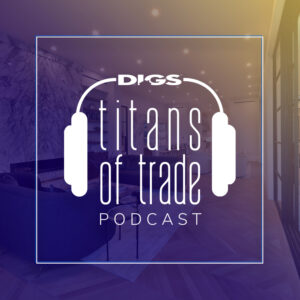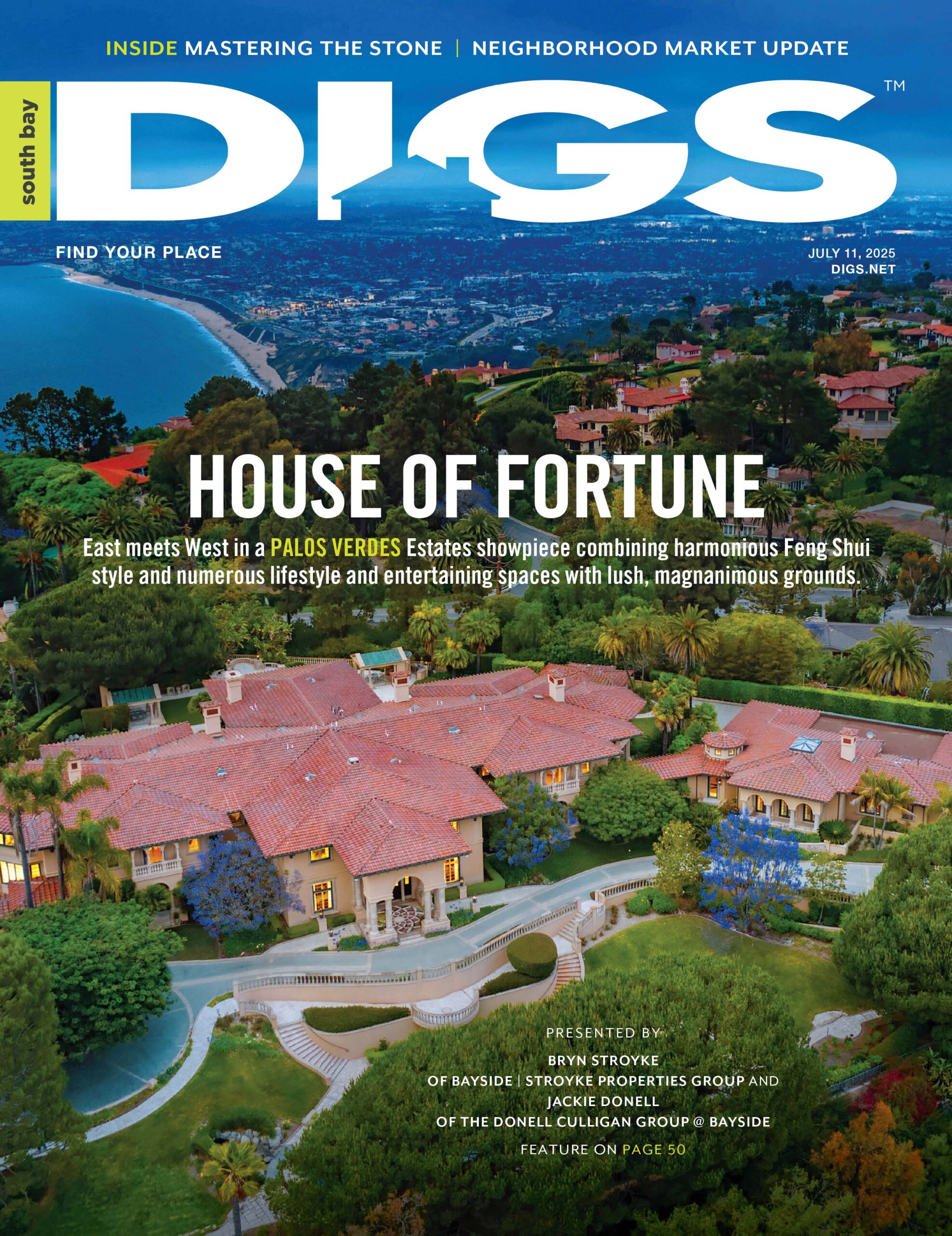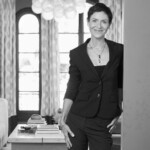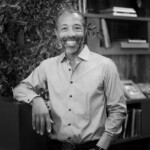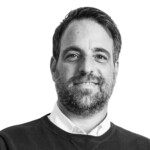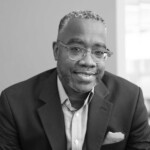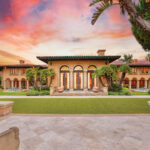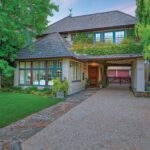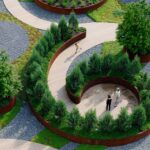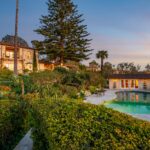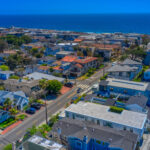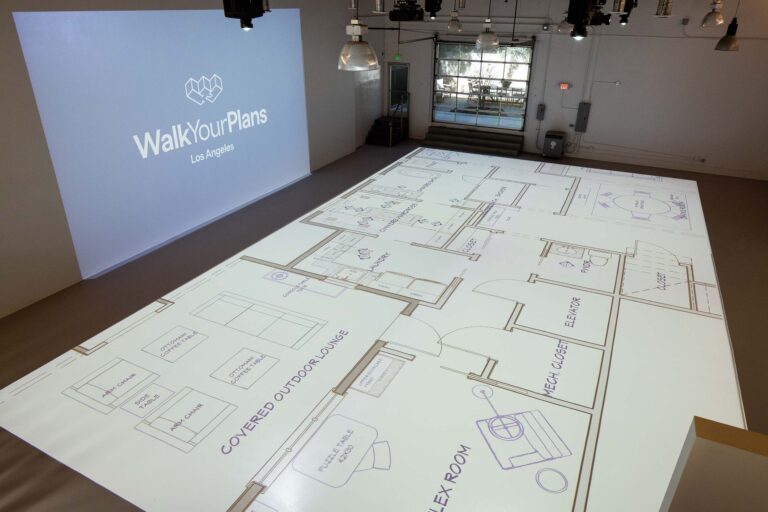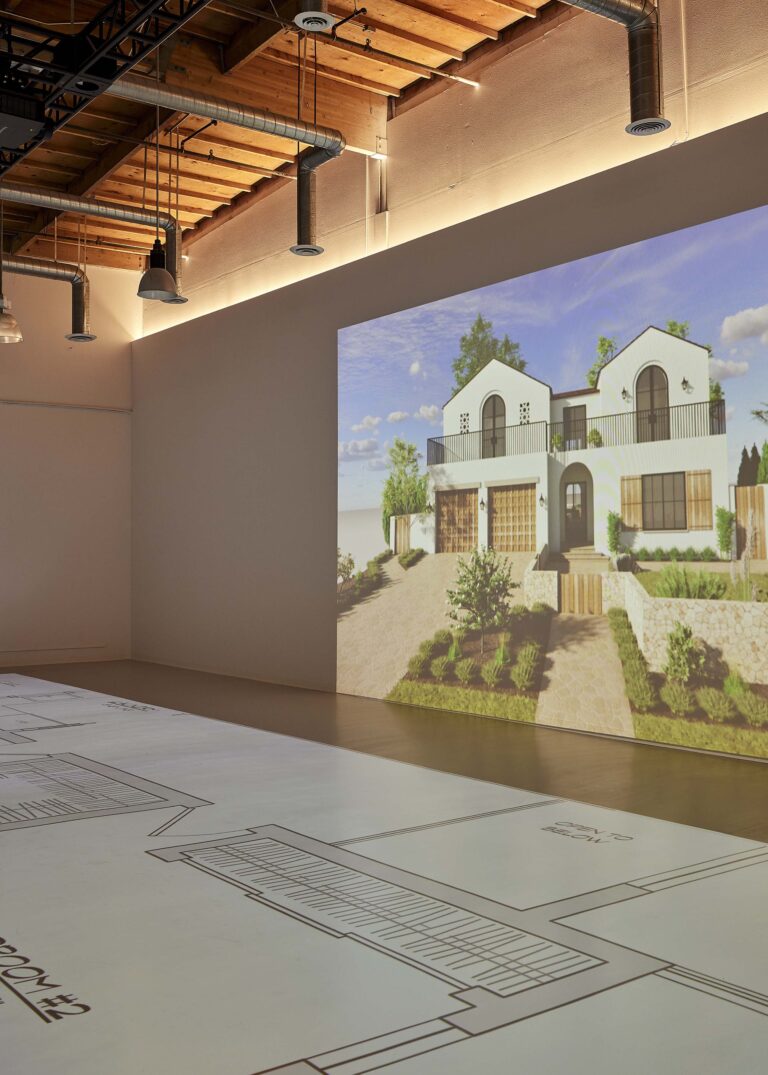Table of Contents
In this Episode
The youngest son of the pioneering architect, Dr. Raymond Neutra currently helms the Neutra Institute for Survival Through Design (NISD), which is actively committed to preserving the physical and intellectual legacy of Richard Neutra. Along with using the Neutra legacy to help solve modern-day design challenges, the Institute promotes those engaged in activities “that reflect the values that my brother, father and mother were committed to,” says Neutra.
Dr. Neutra joins the podcast for a far-reaching discussion: From new innovations at the Institute, to in-depth recollections of his famous father and the fascinating people who surrounded him at Neutra VDL Studio and Residences, an innovative live-work space in Los Angeles, now a National Historic Landmark, that was designed by Richard Neutra in 1932.
“One of my morning jobs was to take a glass of hot milk across the patio, and over into the office where my dad had been working since 4 o’clock in the morning on drawings or writing,” recounts Dr. Raymond Neutra. “And going into the office, and there my dad would be sitting on a tall metal stool with his t-square and triangle.”
Episode Resources
Follow Dr. Raymond Neutra
Follow along with Dr. Raymond Neutra at neutra.org/the-neutra-legacy/raymond-richard-neutra/
Full Episode Transcript
00;00;00;00 – 00;00;31;10
Dr. Raymond Neutra
He was very proud that he was designing something that he thought was lasting. It was appealing to something very basic about human needs as opposed to appealing to a fashionable thing. It’s not so much that the particular solutions of 1950 or 1929 are the ones that we want to go with. But the problems that they address are still there and they challenge us to think creatively about doing things.
00;00;31;10 – 00;00;33;12
Dr. Raymond Neutra
Now.
00;00;35;26 – 00;00;42;27
Constance Dunn
Welcome to Titans of Trade. I’m your host, Constance Dunn. And today we welcome a very special guest, Dr. Raymond Neutra. Welcome.
00;00;43;08 – 00;00;43;28
Dr. Raymond Neutra
Thank you.
00;00;44;05 – 00;01;14;16
Constance Dunn
Yeah. You know, your brother Dion was very generous and very good to DIGS. We did multiple videos, segments and articles about his work. Your father’s work. And one thing about Dion, he was very passionate about his father’s legacy. Not just protecting existing works, but also kind of having the themes and ideas of your of your father’s. Also make sure that they are, you know, kept alive.
00;01;14;17 – 00;01;30;10
Constance Dunn
And now you have taken up the mantle. And I think it’s wonderful that both of you. I think it’s a testament to your father that both of you were so passionate about this. And could you tell us a little about what kind of instilled that in you and what made you want to say, you know, this is important and I need to do this?
00;01;31;14 – 00;02;00;29
Dr. Raymond Neutra
Well, you know, I’m 12 years younger than my late brother. So effectively, I was an only child. And so I grew up around adults. So I was kind of precocious. And when my father wrote his book, Survival Through Design and finally got it published in 1954, I was a high school student, and I actually read the book and became interested in medicine and in neuroscience.
00;02;00;29 – 00;02;42;02
Dr. Raymond Neutra
And so my brother was already an architect, and I decided to take that career into it, developed that by the time I was graduated from medical school that it was pretty clear I was not a laboratory kind of person. And I had an opportunity to work with some anthropologists on the Navajo reservation studying a patients with epilepsy and with what’s called hysteria, a kind of seizure which is thought to be a psychological, not a physiological.
00;02;42;15 – 00;03;11;11
Dr. Raymond Neutra
And then they discovered that I could serve my military duty working with the United States Public Health Service. And I then discovered epidemiology and ultimately environmental epidemiology, and had a career teaching epidemiology in universities. And then for nearly 30 years in the California Department of Public Health, heading up a research division, looking into occupational and environmental epidemiology and toxicology.
00;03;11;12 – 00;03;43;03
Dr. Raymond Neutra
So that would mean that we did studies around communities that had chemical spills. We did a big study on policy and factors of possible health effects from power lines in magnetic fields, things like that. And so I discovered that there was a real homology between the way my father thought about design and how public health people think about it.
00;03;43;03 – 00;04;48;15
Dr. Raymond Neutra
We’re focused on being alert to hazards in the status quo, of being alert to ways to improve that and focus on the effects on human beings, and also gathering information about what works and what doesn’t work. And all of that was something that could be found in that book, Survival through Design that my father wrote. So towards the end of his life, Dion and I agreed on the mission of this institute that my father actually started way back in 1962, to be partly about preserving the physical and intellectual legacy of my father, my brother and actually my mother, Dione who was very important in my father’s career, and but also using that legacy to be
00;04;48;15 – 00;05;30;17
Dr. Raymond Neutra
helpful to people today that are interested in in doing research on what works and design, and also those who are focused on that aspect of design that benefits people and the planet. So projects like schools and housing for the aged and apartments and parks and city design and so forth, So Dion had left us three apartment containing buildings in the Silver Lake District of L.A. and a in a bequest, which makes us possible now to do things that weren’t possible before.
00;05;30;17 – 00;05;45;05
Dr. Raymond Neutra
So we have a very active board and a panel of advisors and our finding partners who see our legacy as something that can be helpful to them. So it’s been a lot of fun for an old guy to have a new job.
00;05;45;26 – 00;06;19;14
Constance Dunn
Right? And you sent over some materials and I thought it was very interesting too, to look at the multi household communities and especially this is like 100 years later, he was starting this in the 1920s. And so these, you know, multi household communities seem particularly relevant today. And I was curious about your thoughts on this and perhaps if you could relay some of the premises of your father related to designing these and his emphasis and interest in in the multi household community.
00;06;20;17 – 00;06;53;23
Dr. Raymond Neutra
So the first one he did was 1927 with the Jardinette Apartments with balconies and so forth, access to the outdoors and then the next one was the 1932 video studio and residences which where Dion and I grew up. And as we grew up, there were a number of times when there were three different households living on a 60 by 70 foot lot and sharing that space with my father’s small office.
00;06;53;23 – 00;07;27;13
Dr. Raymond Neutra
So this was all made possible by multiple exits from the space so that people could come and go without getting in each other’s way and access to balconies and in patios and gardens and so forth and then when my father and Robert Alexander formed a partnership in 1949, they built an office a few blocks away, but that had apartments in it as well.
00;07;27;13 – 00;07;59;20
Dr. Raymond Neutra
And they were designed so they could either be commercial spaces or residential spaces in over their 70 year lifetime. That has actually happened in. So this is relevant to the situation now where we have all these vacant office spaces and homeless people, right? So it’s not so much that the particular solutions of 1950 or 1929 are the ones that we want to go with.
00;07;59;20 – 00;08;33;01
Dr. Raymond Neutra
But the problems that they address are still there and they challenge us to think creatively about doing things. Now we actually have a nice webinar on our website where the architect Larry Scarpa talks about some of the innovative things he’s doing around this typology and talking also about the legacy in Dion and Richard’s practice of this particular type of design.
00;08;33;02 – 00;09;10;15
Dr. Raymond Neutra
So we hope on our website now to have a page where people can see some of the other apartment containing buildings that the practice did, but also are three and they’ll be able to see what passerbys will be able to see. We’ve for each of these three structures, we’re going to have short videos that people can see the interiors on them with a QR code outside the building.
00;09;11;04 – 00;09;47;28
Dr. Raymond Neutra
And so, for example, in the first one that we completed, which was the one of the apartments at the back of the Neutra Alexander office, there’s a short video about the tactics that were used to bring in natural light and protect from natural light was rolled down, awnings and so forth. And what we know about the physiological effects of natural light and how it affects performance, and then there’ll be another brief interior view about how this was designed.
00;09;47;28 – 00;10;29;07
Dr. Raymond Neutra
So it could either be commercial or residential, and then a virtual reality tour that people can take just walking around the vacant apartment. Now it’s occupied by a interior decorator, so it’s being used as a commercial space. Now, the previous occupant used it as a residence, so each of those three buildings will have that and then our website will be set up so that people can see it and that we will have links to other apartment museums around the world in links to some of the people that are doing innovative work today in this typology.
00;10;29;07 – 00;10;39;09
Dr. Raymond Neutra
So we keep trying to use our legacy to stimulate people’s thinking about today’s challenges.
00;10;39;22 – 00;10;52;13
Constance Dunn
Absolutely. Tell us about living in our house and tell us what are some of your favorite memories or little corners of it? Things that just really stay in your mind that you really cherish?
00;10;54;10 – 00;11;29;14
Dr. Raymond Neutra
So I remember as just a really little kid, that one of my morning jobs was to take a glass of hot milk across the patio and over into the office where my dad had been working since 4:00 in the morning on drawings or writing and carefully balancing that that glass of milk going up the stairs and opening the door and opening another door and going into the office.
00;11;29;14 – 00;12;12;12
Dr. Raymond Neutra
And there my dad would be sitting on a tall metal stool with his teeth square and triangle drawing on the thing. And then I was allowed to slurp the skin that formed on the top of that hot milk. This was before homogenization and remembering that as a as a memory. I also remember some of the other people that that lived in the compound at the same time as we did the Frank Wilkinson and his wife Jean and their little baby lived on the upper floor when I was really small.
00;12;12;12 – 00;12;48;17
Dr. Raymond Neutra
He was the person who helped get public housing started in Los Angeles and then fell foul of the McCarthyite in the in the 1950s and then became a real activist. I’m free to freedom of speech in and was a friend of the family throughout his lifetime. I also remember sort of eavesdropping at night on the client conferences that took place in the living room on the second floor of VDL.
00;12;49;04 – 00;13;29;09
Dr. Raymond Neutra
So there were lots of people who came and went in and of course, wandering through the drafting room, there was a international group of architects that would come and work with my fathers, some of them briefly, some of them for long periods of time, and of interesting characters like Sergei Kozhin, who was a Russian architect who had worked with Le Corbusier in Russia and then in the Second World War was captured by the Nazis and managed to survive that and came to the United States and then worked with my dad for for nearly 20 years.
00;13;29;26 – 00;13;40;09
Dr. Raymond Neutra
And he was assigned the unenviable task of trying to teach me how to draft. And I wasn’t very gifted at that. But he was very patient and nice guy.
00;13;41;17 – 00;14;06;26
Constance Dunn
Right? And it strikes me that your father, I would imagine, was a very serious and a very productive man. So it’s testament to the the skill of the VDL design that a very busy, you know, intense person that needed to be very focused could do so in a structure where there was a lot of things going on, a lot of people, a lot of personalities.
00;14;07;05 – 00;14;15;16
Constance Dunn
I’m just curious about that. What do you think are some of the elements that Lent Lend to the video house to being so successful in this regard?
00;14;16;11 – 00;15;05;24
Dr. Raymond Neutra
Right from the beginning, it was designed with this idea that a number of households could be there, and so there was a lot of attention to the traffic and how people could exit the building with without having to go through the other spaces. So his bedroom was on the top floor, the far, far end. And ultimately there was a little elevator that was put in the closet and in the sort of the main office of the office manager was on the floor below and people would do drawings and then put it in the elevator and send it up in the elevator for him to fish out and look out.
00;15;06;03 – 00;15;51;01
Dr. Raymond Neutra
Look at it early in the morning when his brain was fresh. Another feature was that there was a wing of the house that was built when I was born in 1939. That was separated by two patios. And my mother, who was a musician and a very much involved with my father’s career in the way, for example, that Elaine Saarinen was involved with, with her husband’s career, or Ray Kappe wife was involved with his that Sunday morning was a time when she was her own time.
00;15;51;01 – 00;16;30;15
Dr. Raymond Neutra
She was a musician and she would be in the piano room in this wing that was separated by a a patio, and she would play the piano and sing Schubert and Schumann and Brahms. And then she also played the cello and sang at the same time. People can read about her on her website. And we just added a recently remastered digital copy of a record that she had made some time in the early sixties, I think it was of her music.
00;16;30;15 – 00;16;42;10
Dr. Raymond Neutra
So you can hear that. But anyway, I would sit under the piano reading the comic book while she was playing on the piano above me, and that’s one of my vivid memories too.
00;16;42;12 – 00;16;45;29
Constance Dunn
It sounded like you had a really explored, very childhood.
00;16;46;22 – 00;17;18;18
Dr. Raymond Neutra
Wrote, you know, I look back and I was really surrounded by both the people immediately in my in my family, but their friends of people who were tremendously engaged and creative people. So I was lucky in that way. And a lot of helpful, well intentioned people to a lot of modeling of of a productive, happy living, a was around me both with relatives and friends.
00;17;19;10 – 00;17;29;13
Constance Dunn
And you mentioned something that, you know, Dione was very involved in, you know, your father’s work and you know, what were some of the ways that she was.
00;17;29;28 – 00;18;14;26
Dr. Raymond Neutra
Right from the beginning. She kind of signed up. I think that she was attracted by his sense of mission and in early letters that she ultimately published a whole book of letters that she found in a box after my dad died with a note on to read when I get old. And she had completely forgotten these letters, but they wrote each other long letters because after they met in Switzerland, I think it was 1919, my father went back to Austria, so they were letters going back and forth.
00;18;14;26 – 00;18;50;05
Dr. Raymond Neutra
And then he got a job in Berlin. And so letters were going back and forth and she, you know, expresses to my father’s older sister that this is how she saw this relationship, that she was going to be helpful to him in that children were fine. But but, you know, they were going to grow up and have their own lives and then they would be together again as they had before they had children.
00;18;50;22 – 00;19;18;26
Dr. Raymond Neutra
And so she learned to type in and also her family in a way, became a much closer to my father than his own family, because his like me, he was much younger than his next siblings. So they were almost a generation before him and they were not particularly interested in modern architecture with sort of a peculiarity of their kid brother.
00;19;18;26 – 00;19;50;15
Dr. Raymond Neutra
Right. But my grandmother was also very charmed by my father. And so it was she who got the idea of having Neutra and Schindler do the League of Nations competition. And in urging him to do that and always looking out for contacts and friends where she could, this is my grandmother. So my mother was that way, too very a possibility thinker.
00;19;50;17 – 00;20;20;13
Dr. Raymond Neutra
There was an episode when I was about five. I think that 1944 there was no more architecture being done. And my father was offered two things. One was that he would go to Bennington College to teach, and the other was that he could be the design advisor to a project for designing schools and hospitals in the island of Puerto Rico.
00;20;21;08 – 00;20;50;08
Dr. Raymond Neutra
And he told my mother this, this, this crazy idea, but why don’t you think about it? And so she sat down and wrote the pros and cons of of these two things and then realized, you know, we really can do them both because the in the winter semester, not so much is going on at Bennington and we could just sign on for the fall in the spring.
00;20;50;08 – 00;21;16;24
Dr. Raymond Neutra
And then in the wintertime you could be in Puerto Rico and work there. Characteristically, she decided that it was much more important that she should be with my father than with her five year old son. So I was shipped off to a boarding school for that winter semester, a kind of a lonely memory for me at that time.
00;21;16;24 – 00;21;58;26
Dr. Raymond Neutra
But this was something that was a really precious time for them all. My dad was vigorously working on these designs and pulling together a team of of architects to do them. My mother had a chance to play on her cello in in semi tropical Puerto Rico and there was an episode sort of just before that was solidified where my father had pneumonia and she had to go around to all the government agencies to get the documents to allow them to travel to Puerto Rico during the war time.
00;21;58;26 – 00;22;28;18
Dr. Raymond Neutra
So she was very resourceful that way. Yeah, I tell the story, too, when I was more like a teenager. That kind of illustrates the two sides of my dad and how my mother played into that. She realized there was a block of time. It must have been about April of been around 1950 or sometime around there that there was nothing scheduled.
00;22;28;18 – 00;23;08;06
Dr. Raymond Neutra
And she suggested that we all take a a drive up the coast to Mendocino County and this happened to be the time of rhododendrons coming out. And I remember driving down the Cruz rhododendron preserve near Fort Ross, something that I know about, because later I took my kids to a camp there, so I rediscovered that place. We drove down this dirt road through all these rhododendrons and my father had had a heart attack.
00;23;08;06 – 00;23;34;11
Dr. Raymond Neutra
And in those days it was said that you had to not exercise too much if you had a heart attack. And so and that he shouldn’t drive anymore. So my mother drove and we had a Nash car where the back seat of the of the passenger, the front passenger seat went down and he would sit with his back against the back seat with his feet stretching out.
00;23;34;11 – 00;24;09;29
Dr. Raymond Neutra
And I was sitting next to him and we were looking back out the back of the back window, going through these clouds of white rhododendrons. And it was just silence as we observed all that and he I could see how moved he was by this beauty. And then some hours later, we went to to someplace up more near Mendocino and we noticed that there was a plot of land on the ocean with the sign there saying that they were going to do something.
00;24;10;20 – 00;24;39;19
Dr. Raymond Neutra
And we were driving back from that when he suddenly told my mother to stop at a country store and he went into the store and we were in the car and then he came out and went into the phone booth and started telephoning. And then he came over with a mischievous smile on his face and leaned over through the driver’s window and said, You are Junior.
00;24;40;01 – 00;25;07;05
Dr. Raymond Neutra
Where do you think we are going to spend the evening tonight? He said the original idea of smiling back, knowing that there was something afoot and he said, We are going to Lake Tahoe. You said you are of Asia, This is 300 miles away. Why are we going to Lake Tahoe? Because that is where the Ford dealers are meeting us.
00;25;07;05 – 00;25;42;24
Dr. Raymond Neutra
And by Do we care about the Ford dealers is because Mr. Smith, who is the Ford dealer here, is the man who owns that property. And I’m going to suggest that I work with him to do a development there. So we hopped in the car, drove over the coastal mountains into the Central Valley, past Chico and up into Lake Tahoe and my father made a beeline to the part of the hotel where where all the, you know, the Ford paraphernalia were.
00;25;42;24 – 00;26;09;03
Dr. Raymond Neutra
And then he went, called up Mr. Smith and invited him to have breakfast with us. And he made his pitch and took out the little laminated card that he always had in his in his wallet with the Time magazine cover on it and showed a bunch of pictures to Mr. Smith and nothing came of it. But that was one of many sketches that that he made.
00;26;09;03 – 00;26;22;15
Dr. Raymond Neutra
And then my mother was up for this deviation from her vacation plan for the adventure with this entrepreneurial, interesting God that was never boring.
00;26;22;15 – 00;26;46;20
Constance Dunn
And so they were partners. And you were also along for the ride. It seems like sometimes with parenting parents kind of sequestered children in many ways from their lives. Their parents kids don’t know much about their parent’s work or, you know, there’s not a lot of open discussion between parents in front of the children, but it seems like you are just part of part of the journey there.
00;26;46;20 – 00;27;00;07
Constance Dunn
What was that like for you? I mean, you were a child, you were a young person. And did you ever think about that in those terms? Like, okay, my parents are different than the way some of my friends parents are. There’s a different relationship here.
00;27;00;21 – 00;27;44;21
Dr. Raymond Neutra
Yeah, but it’s interesting. I really had very few children, friends until I got into high school, and so I can remember that I consciously realized that. But basically I was just taken along and I was taken along on photo shoots, too, with Julius Shulman and I was taken along to visit a buildings under construction and I was included in dinner parties where there were intellectual discussions.
00;27;44;21 – 00;28;01;09
Dr. Raymond Neutra
And so that was lots of motivated, hard charging people as as role models for me.
00;28;01;09 – 00;28;24;27
Constance Dunn
Yeah, Yeah. I wanted to switch and talk about sustainable design in the sense of in the NOI sense and in the way it can, quote, support us and maintain us into a future with its own new challenges. I find that fascinating was the idea that there would be architecture that would basically roll with the changes of of its inhabitants life.
00;28;24;27 – 00;28;28;00
Constance Dunn
Is that what is meant by sustainability in that way?
00;28;29;05 – 00;29;09;15
Dr. Raymond Neutra
Yeah, I think that there was a whole generation of of architects after the arts and crafts movement and Frank Lloyd Wright was the leader at that in the early phases of his career, where it became clear that if if you were committed to providing a wide swath of the population with a healthy and usable environment, it simply was not possible to do it unless you came to terms with industrialization and prefabrication.
00;29;09;15 – 00;29;56;22
Dr. Raymond Neutra
And and in what have you that architects previously had been oriented to building cathedrals and big government buildings and in and in mansions. Right. And now they were turning to designing things like schools and hospitals and what have you. And of course, technology would change and social organizations would change. And the places where you extended like deserts and jungles and so forth, that the climates would change, I don’t think.
00;29;57;07 – 00;30;24;02
Dr. Raymond Neutra
And so my father was quite sensitive to orientation and where the sun was coming from and capturing the breezes. This was before air conditioning and so forth, and it was an early adopter of using radiant heat. And in the Kaufmann desert house, he actually had chilled water going out into the pool deck so that it wouldn’t be too hot.
00;30;24;02 – 00;30;56;20
Dr. Raymond Neutra
You could sit on it. And so there was a lot of attention to that with with awnings built into the design of the structure rather than as an afterthought and under a vertical metal louvers to follow the sun and and control things. I don’t think that he anticipated the whole issue of of carbon footprint in and in those aspects.
00;30;57;02 – 00;32;01;06
Dr. Raymond Neutra
But the general commitment to be thinking about consequences make it very easy to to move into that. And so with the changing climate we’re going to have issues of extending the usable life of some of the buildings. See, we’re partnering with the environmental psychologist Perkins Eastman, who are raising funds to do a post occupancy evaluation of the UCLA laboratory school that was designed in 1958, and it has large sliding glass doors and cross ventilation and so forth, as well as L.A. becomes as hot as Riyadh, Saudi Arabia, there is going to have to be some adaptation of the design of that to to extend its life because climate has changed.
00;32;01;06 – 00;32;28;20
Dr. Raymond Neutra
And so they’re going to give some thought to that as well. And of as as we move to different latitudes, there is going to be all kinds of challenges as we move to the moon, there will be challenges and we won’t have a sliding glass doors going out there. But we will have to capture the essence of what human beings are adapted to for these other kinds of environments.
00;32;29;18 – 00;33;05;10
Constance Dunn
You know, the idea of bio realism, as as Richard Neutra said, and connecting science to design that was a real emphasis of his from the beginning and again, I assume a very serious man. A lot of rigor to his thoughts. This was a very serious pursuit, and I was just curious about the idea of science and design and having some kind of, I don’t know, quantify viable way to measure the impact of the success of one’s design and ways that that that could be done at.
00;33;05;10 – 00;33;06;13
Constance Dunn
It’s kind of free form.
00;33;06;13 – 00;33;52;11
Dr. Raymond Neutra
But yeah, I think that he recognized that that there was some resistance to the idea of applying scientific knowledge to something as artistic as design, and there would be the fear that it would just become designing by rote or, or something like that. And I suppose that that could happen, although for him it was very stimulating. It gave him ideas and and excited him to pay attention to some things that maybe he hadn’t paid attention to.
00;33;52;25 – 00;34;45;27
Dr. Raymond Neutra
And so we were in the process of republishing this book, Survival through Design. Are you going back and chasing down some of the references that he had? He was quite widely read in the neuroscience of the thirties and forties and early fifties and the the a lot has happened since he he wrote that book and he probably would think of things somewhat differently if he had the advantage of the many things that are going on now that we have the tools with functional magnetic resonance imagery and so forth to study things that just were not possible then.
00;34;47;04 – 00;35;29;26
Dr. Raymond Neutra
And so on the one hand, we can have standard practices that reflect certain knowledge and respect them that will improve the quality of the inevitably large volume of mediocre work right. But can also stimulate the the groundbreaking. And in a setting, the standard kind of architecture of creative architects. Right. And it’s not just architecture. We’re talking about equipment design.
00;35;29;26 – 00;35;44;14
Dr. Raymond Neutra
We’re talking about city planning, about neighborhood planning, furniture, lighting, all kinds of things that we’re surrounding ourselves with a man designed environment.
00;35;45;24 – 00;36;26;21
Constance Dunn
And, you know, thinking just about I’m curious about thinking about we had the opportunity to visit Dion and at the Reunion house and spent some time there. And also just I’ve written about the Lovell Health house as well as Kauffman House. And I’m curious, what do you think your father would think these are still very user friendly, incredibly valuable properties many years later, decades later, like I remember just being in the Reunion House with Dion and the Sliding Glass, and I believe it was original and just opening that up and being in that lovely court courtyard.
00;36;26;21 – 00;36;43;17
Constance Dunn
And again, just what do you what do you think your father would think of this to see? Kauffman House and of the Lovell Health house going for millions of dollars and just looking as lovely as they are and and how they’ve endured, Do you think you’d be surprised?
00;36;44;27 – 00;37;15;27
Dr. Raymond Neutra
No, he was very proud that he was designing something that he thought was lasting and that that because it was appealing to something very basic about human needs as opposed to appealing to a fashionable thing. So, you know, the the latest kind of clothing is not anticipated to be. It’s designed so that it wouldn’t be long lasting otherwise.
00;37;15;27 – 00;37;51;29
Dr. Raymond Neutra
You’d never buy a new dress. Right? It’s supposed to be something new and surprising, and no one expects it to last very long. And he felt that architecture and I was thinking recently about Central Park, 150 years old or more now that it continues to be used, not in exactly the same way it was in the mid 1800s, but it’s it it is flexible enough to continue to provide pretty much the same kind of satisfactions.
00;37;52;15 – 00;38;28;29
Dr. Raymond Neutra
And so he was looking to do that. The the reunion house is, of course, one of the properties that Dion has left to us. It has a small apartment that was anticipated in the original design, but that Dion finally built above the garage and we are in the process of offering to the University of Southern California a residency for final year Master’s students that are interested in what my dad called architecture of social concern.
00;38;29;16 – 00;38;58;16
Dr. Raymond Neutra
They’ll be able to to stay there for a year rent free in exchange for giving a webinar on our website about the project that they worked on and giving one public tour a year. And they will be in one wing of the house and then the master bedroom will be reserved for visiting. Scholars have four of those a year, and so that student will get to meet some interesting people at the other end of the house.
00;38;59;06 – 00;39;17;10
Dr. Raymond Neutra
And so we look to once again use our legacy to promote those today who are doing the kinds of things that reflect the values that my brother and father other were committed to.
00;39;18;29 – 00;39;49;22
Constance Dunn
And and you’ve done you’re helming the institute and you guys are moving and groovin. I was reading through what you’ve accomplished in the last year alone, and you guys are just a lot happening. And I think it’s extraordinary. What is it been like helming this and being part of the Institute for you? I mean, you’re a doctor of a many decades and working in medicine and being an epidemiologist and this is a little bit of a change or perhaps it isn’t.
00;39;49;22 – 00;39;59;15
Constance Dunn
But what have you enjoyed so far? And congratulations by the way, because you guys are doing such a great job and and doing so much well.
00;39;59;23 – 00;40;48;25
Dr. Raymond Neutra
It has really been heart warming to a lot of people love this legacy that they’ve just stepped forward and brought their ideas and a lot of work to make this all happen. We’ve been our secretary, Sian Winship is the president of the Southern California chapter of the Society of Architectural Historians. And her partner, John Burley has volunteered as a he’s an architect and as our client representative for a number of the projects to both evaluate what we have to do to bring these properties up to snuff and and start doing the work on them.
00;40;49;06 – 00;41;22;22
Dr. Raymond Neutra
We had to redo the electrical system at Reunion House because it turned out that some of the old technology was was no longer acceptable to the insurance companies and things like that. So all kinds of interesting ideas have come up. We’re partnering with Fort L.A. for Residential Treasures of L.A. and we they’ve made a trail of Neutra Apartments and Schindler apartments in the Silver Lake District.
00;41;22;22 – 00;41;36;24
Dr. Raymond Neutra
So people who come on and see our three buildings also can see VDL and the Koblick duplex and then some of Schindler’s wonderful apartments there. So all kinds of people are stepping forward and it’s just a lot of fun.
00;41;37;04 – 00;42;05;26
Constance Dunn
Yeah. Oh, good. That’s a great attitude. You’re like, It’s a lot of fun. That’s wonderful. I know that Dion was particularly concerned about making sure that existing Neutra structures and designs were intact or were not demolished or destroyed in any way. Is your emphasis more on the architecture of social concern aspect?
00;42;05;26 – 00;42;35;28
Dr. Raymond Neutra
What we’re trying to we realize that protesting destruction is important, but we’re you know, I’m a preventive medicine guy, so I’m trying to think, how do we make that less likely? And one of the exciting things is two of the owners have stepped forward. This is Professor Chris Hacker, and his musician partner will Thomas, who own a motor house.
00;42;36;10 – 00;43;25;06
Dr. Raymond Neutra
And they are forming a network of Neutra owners and stewards who can share experience of successful restorations. And when they come up with them, we will feature little webinars on our public web page to inspire people that, yes, this can be done. The there’s one of them there now about the Painted Desert community of Neutra and Alexander where the previous ranger who was in charge did a lot of work in salvaging that property, which is now a national historic monument.
00;43;25;22 – 00;44;08;18
Dr. Raymond Neutra
And so we’ll have more of those. Another example of of enthusiastic people volunteering, being to to step forward. There are sad stories. I’m involved with one here in Monterey County where a wealthy tech person has bought a beautiful house on Pebble Beach that she wants to tear down and has allowed to fall into a decrepitude. And it’s now being decided at the county supervisors level about whether they’re going to let this happen.
00;44;10;01 – 00;44;51;11
Dr. Raymond Neutra
It’s sort of a sad story. She requested the ability to tear the thing down and was told that she had to do an evaluation of whether it was historic and she hired a specialist to look at it. And he said, yes, lady, it is historic. Then she fired him and finally the state historic office declared it as historic in a couple of years after that, she claimed that some vagrants had come into the house with a chainsaw and systematically spent several hours cutting through the supports of this house.
00;44;51;11 – 00;45;17;14
Dr. Raymond Neutra
And she said she has absolutely nothing to do with that. And and so she was required to put cribbing under it and then building has been left open, Glass is broken. The house was inhabited when she bought it and owners of many years and so now it’s a wreck and the county is saying, well, it’s a wreck, so it should be torn down.
00;45;17;15 – 00;45;42;15
Dr. Raymond Neutra
And my statement to them is that they are creating a bad precedent, because if they say that if something like this happens in your historic building, we won’t investigate to find out what happened. And once it’s what’s once it’s torn down, you know, once it’s deteriorated, then we will let you tear it down and put your whatever you want in it in its place.
00;45;42;15 – 00;46;10;12
Dr. Raymond Neutra
And so there are lots of historic buildings that this could be done to. Yeah, we’ll see what happens. We of the Association of Monterey Area Preservationists have been fighting this and some of the neighbors have been fighting it. But do your own do the old college, tried it, tried to save these things, but prevention is maybe an important thing for us to do, too.
00;46;10;13 – 00;46;10;23
Dr. Raymond Neutra
So.
00;46;11;15 – 00;46;36;25
Constance Dunn
Right. And I love that approach. The idea of creating this network of Neutra you know, property owners. And it’s it is it’s it’s a great preventative medicine guy kind of approach, what you’re saying. And it seems very effective ultimately. So that’s that’s wonderful to hear. And we of course, thank you so much for for being part of this and sharing all these personal recollections and just what’s going on with the institute.
00;46;37;03 – 00;46;43;07
Constance Dunn
What is the website where can people see all these wonderful videos and get all this great material?
00;46;44;00 – 00;47;13;03
Dr. Raymond Neutra
So it’s easy neutra.org. And we think our audience is partly people who love to see good beautiful pictures and we’ve emphasized the nonresidential project because US modernism has most of the residential project. So we have schools and apartments and civic buildings and so forth, some of which are not so well known.
00;47;13;16 – 00;47;43;29
Dr. Raymond Neutra
Many of them were documented extensively by Julius Shulman, but the publications only have one or two of those pictures. So we are showing pictures that most people have never seen. So that will be interesting. And then the other audience are high school students and college students and need to write a a you know, a term paper and the occasional doctoral student that really wants to dig into it.
00;47;43;29 – 00;48;23;14
Dr. Raymond Neutra
And so there’s quite a bit of depth there in in the website for people who want to dig deeper with information, both in interviews and videos of my father and mother and Dion. And one of the things that we’re excited about was that the historian Barbara Lamprecht reminded us of a 1968 documentary in the German language about my dad’s ideas and with the help of Russell Brown of Ford L.A., we’ve put English subtitles on it.
00;48;24;27 – 00;48;57;23
Dr. Raymond Neutra
The wife of the president of the Neutra Gesellschaft in Germany went through that whole film and wrote down the German and then translated to English so that we could make these subtitles. And now we’re a colleague in China is going to make Chinese subtitle. And so it’ll be available to a billion people and in China. So there’s things like that on the website that I think people will find interesting.
00;48;58;07 – 00;49;47;00
Dr. Raymond Neutra
And then there’s related website that a professor of history at Cal Poly did about the social life at the VDL and website is NeutraHistory.org and it has things in there for example that my mother was very enterprising when they would invite interesting people because they were immigrants to this interesting house and all kinds of people came there and she wrote who she invited on what date, what she served them, and what she’s saying to them between 1938 and 1963.
00;49;47;00 – 00;50;01;05
Dr. Raymond Neutra
And we summarize some of that material at that website and talk about some of the different people I mentioned all these three different households at different times. So that’s another website that people who are interested in might like to look at.
00;50;01;18 – 00;50;02;26
Constance Dunn
00;50;03;08 – 00;50;04;09
Dr. Raymond Neutra
00;50;04;23 – 00;50;08;14
Constance Dunn
All right, Well, onward and upward. Thank you so much, Dr. Neutra
00;50;08;28 – 00;50;18;13
Dr. Raymond Neutra
Thank you so much for your interest.
